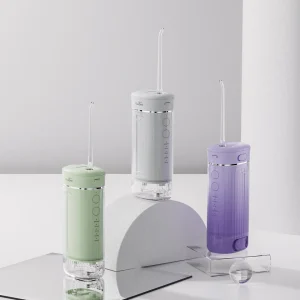Teeth whitening products have gained widespread popularity in recent years, offering consumers an easy way to achieve a brighter smile. However, for professional manufacturers, the formulation of a teeth whitening gel goes beyond just effectiveness — it also involves ensuring safety, comfort, and longevity of results. In this blog, we’ll provide a complete analysis of teeth whitening gel ingredients, focusing on the crucial factors of hydrogen peroxide levels, desensitizing agents, and pH balance, all of which directly impact both the efficacy and safety of the product.
Hydrogen Peroxide Levels: Ensuring Safe and Effective Whitening
Hydrogen peroxide is the most common active ingredient in teeth whitening gels, responsible for breaking down stains and lightening the tooth enamel. However, the hydrogen peroxide levels used in whitening gels must be carefully controlled to ensure both safety and effectiveness.
Low Hydrogen Peroxide Concentration (around 3-6%): Typically used in over-the-counter products and at-home kits, these levels are effective for mild to moderate stains and are generally safe for regular use.
Moderate Hydrogen Peroxide Concentration (around 7-12%): Commonly used in professional products, these levels provide faster and more noticeable results but require a controlled application to prevent enamel damage or irritation.
High Hydrogen Peroxide Concentration (above 12%): These higher concentrations used in professional dental offices under supervised conditions for intense whitening. The risk of tooth sensitivity and gum irritation increases at these levels.
The key is to ensure that balanced hydrogen peroxide levels , providing effective whitening without compromising tooth and gum health.
Desensitizing Agents: Minimizing Discomfort for Users
One of the primary concerns for users of whitening gels is the potential for tooth sensitivity, which can occur as a side effect of the bleaching process. To address this, many teeth whitening gels contain desensitizing agents that help reduce discomfort during and after the whitening procedure.
Some common desensitizing agents include:
Potassium Nitrate: This ingredient helps calm nerve endings in the teeth, reducing the sensation of pain or sensitivity.
Sodium Fluoride: Often included to strengthen enamel and reduce sensitivity by promoting remineralization.
Calcium Phosphate: Helps to rebuild enamel and reduce sensitivity after whitening.
Including desensitizing agents in the formula is essential to enhance the overall user experience and ensure that customers can enjoy the benefits of whitening without discomfort.
pH Balance: The Key to Enamel Protection
The pH balance of a teeth whitening gel plays a crucial role in its effectiveness and safety. A gel with an improper pH can lead to enamel degradation or irritation of the gums. The pH level must be carefully controlled to maintain a safe and effective whitening process.
Acidic pH (below 6.0): Highly acidic formulations can damage the enamel and irritate the gums, especially if left on too long.
Neutral pH (around 7.0): This is ideal for teeth whitening gels, ensuring that the gel is effective at breaking down stains without harming enamel or causing discomfort.
Alkaline pH (above 8.0): While slightly alkaline formulations can cause dryness or irritation of the gums if not carefully formulated.
Maintaining an optimal pH balance not only maximizes whitening results but also ensures long-term oral health.
Additional Ingredients: Enhancing the Whitening Experience
In addition to the key ingredients mentioned above, several other ingredients are commonly included in teeth whitening gel formulas to enhance the user experience:
Glycerin: A humectant that helps retain moisture, keeping the gel from drying out on the teeth.
Carbomer: Used to thicken the gel, providing a smooth, easy-to-apply texture.
Aloe Vera: Known for its soothing properties, aloe vera can help calm gum irritation and improve comfort during treatment.
These additional ingredients improve the gel’s performance and make the application process smoother and more pleasant.
Conclusion: Creating the Ideal Teeth Whitening Gel Formula
To create an effective and safe teeth whitening gel, manufacturers must balance a variety of factors, including hydrogen peroxide levels, the inclusion of desensitizing agents, and maintaining an optimal pH balance. By carefully selecting the right combination of ingredients, manufacturers can ensure that their whitening gels deliver fast, noticeable results while protecting tooth and gum health.
When developing a whitening gel, manufacturers should also consider additional ingredients that enhance both the user experience and product stability.
At powsmart, we specialize in formulating and manufacturing premium teeth whitening gel products that meet the highest standards of safety and effectiveness. Contact us today to learn more about our customized whitening gel formulations tailored to your brand’s needs! https://www.powsmart.com/contact-us/

